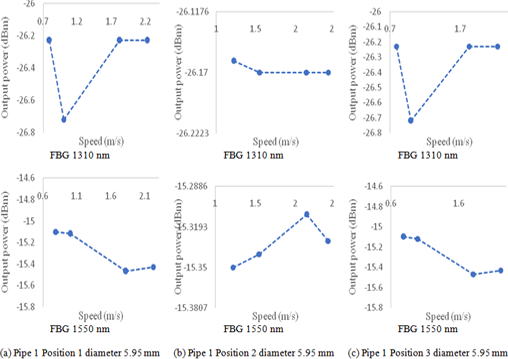Analysis of fluid flow in a cylindrical tube using fiber Bragg grating
DOI:
https://doi.org/10.59190/stc.v4i1.253Keywords:
Cylinder Tube, Fiber Bragg Grating, Fluid Flow, Sensor, SpeedAbstract
Fiber Bragg grating (FBG) is an optical sensor component that has better performance than other optical and electronic components. FBG has a very high sensitivity to changes in temperature and strain, is small in size, and is resistant to electromagnetic wave interference and multiplexing. In this study, FBG is used to monitor the fluid flow rate in a pipe by analyzing changes in the output power generated by the FBG. This research was designed by varying the pipe diameter, measurement position, and fluid flow rate. The diameters of the pipes used are 5.95, 7.01, 8.79, and 10.32 mm. The fluid flow rate that passes through each pipe is also varied. The measuring position is placed at 1/3 2/3, and 3/3 pipe diameter. The fluid flow rate and the output power generated by this FBG are measured using an anemometer and optical power meter respectively. The FBG used in this study has a center wavelength of 1310 nm and 1550 nm. In this study, the value of power generated from pipe 1 of position 1 FBG with a wavelength of 1550 nm is 15.1 dBm, while at a wavelength of 1310 nm is -26.23 dBm which indicates that the power generated from FBG with a wavelength of 1310 is the biggest. The speeds obtained at pipe position 1 from the anemometer measurements are 0.79, 1, 1.82, and 2.22 m/s which are directly proportional to the power generated at the 1550 wavelength FBG, -15.1, -15.12, -15.47, and -15.43 dBm, respectively. So it can be concluded that the greater the speed generated by the fluid flow, the greater the power generated.

Downloads
Published
How to Cite
Issue
Section
License
Copyright (c) 2023 Agam Muhammad Maulana, Khaikal Ramadhan, Dedi Irawan

This work is licensed under a Creative Commons Attribution 4.0 International License.










